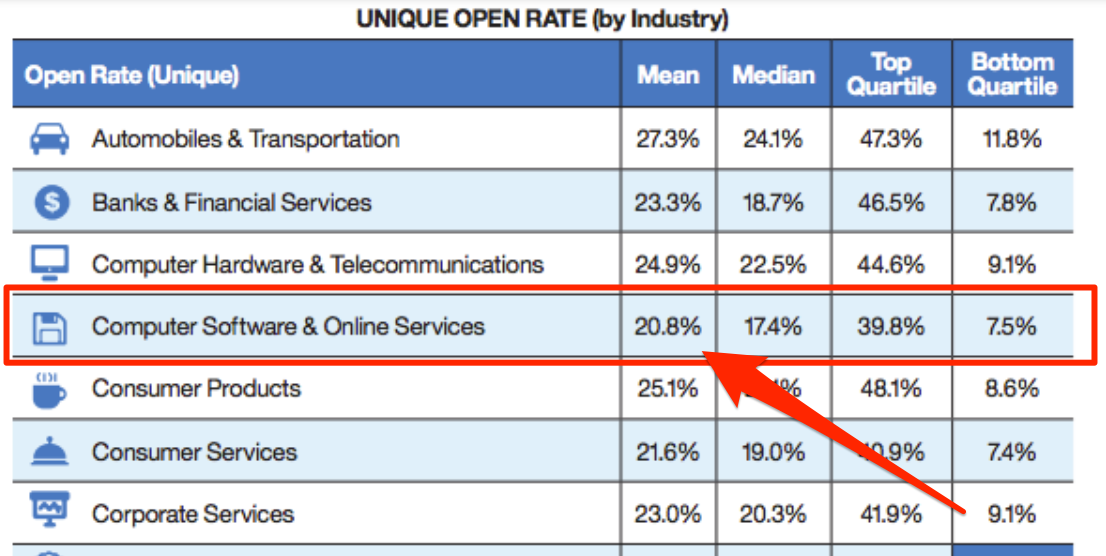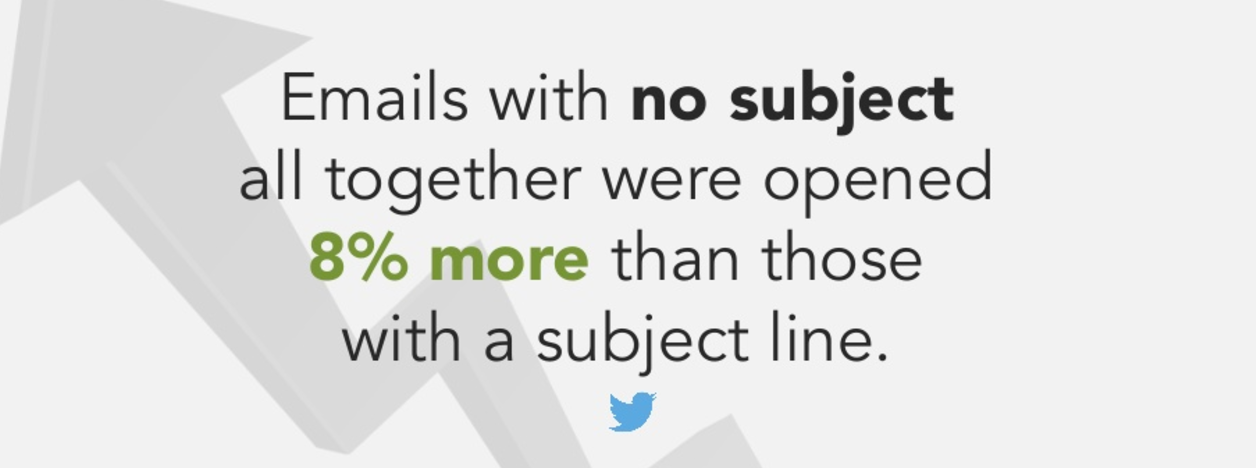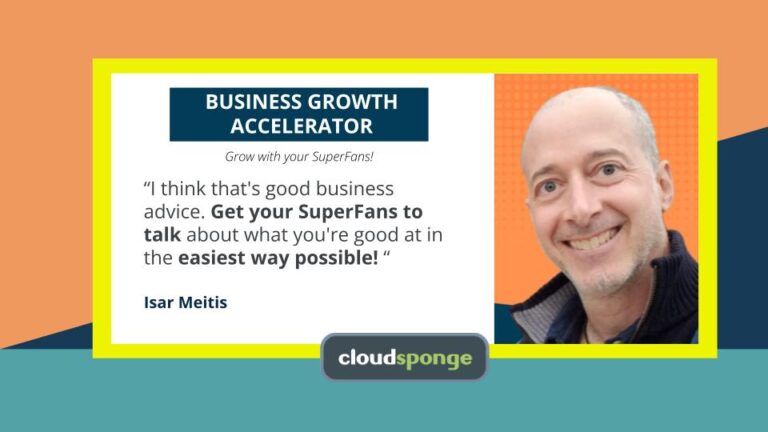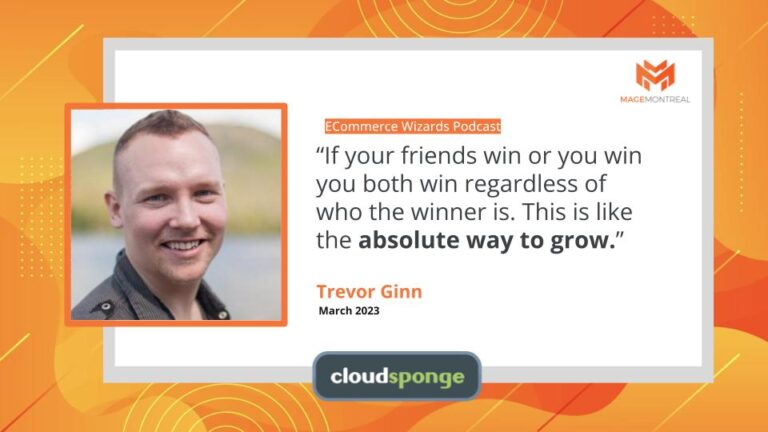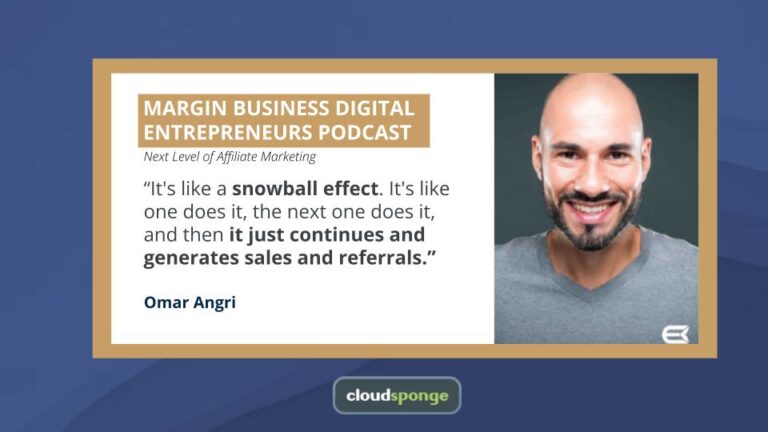I really don’t want to crush this for you but… getting someone to send a referral email is not even half of the battle.
Sure, you’ve got a new referral. One that, potentially, could help grow your business.
But unless the other party opens and acts on that email, the whole thing’s pretty much worthless.
To make this even worse, the data from various email studies make it super clear:
Getting recipients even to open an email is one heck of a challenge.
Here, take a look:
And if you consider that the above data focuses primarily on marketing and transactional emails, not referrals (which I suspect might actually achieve even lower results), then…
…the whole thing is hardly encouraging, right?

So is there any good news?
Yes.
Because you see, you can optimize your referral emails to achieve a higher open rate.
And luckily for you, that’s exactly what I’m going to show you in this post.
You’ll learn:
- Factors that influence the open rate of your referral emails, and
- How to include or improve those factors in your campaigns.
Intrigued? Let’s get right to it.
[BONUS: Want to learn how other brands implement their referral programs? Check our referral program teardowns.]
Super Bonus: Get a FREE evaluation of your existing referral system -
Download our DIY 'Better Sharing Workbook' Now!
What is a Good Referral Email Open Rate?
When it comes to measuring the success of your referral email campaign, one of the key metrics to consider is the open rate. However, determining what constitutes a good referral email open rate can be tricky as it varies from industry to industry. While some industries may see higher open rates than others, ultimately, the best referral email is one that captures the attention of your target audience, encourages them to open it, and drives them to take action, ultimately leading to increased traffic and sales.
3%? 15%? 25%? What’s a good referral email open rate? The answer, as you might have guessed, is: it depends. In fact, some industries like the electronics and gadget industry are going to see more, while others are going to see less.
You’ll know it if you don’t crack the code and get it where it needs to be– in traffic and then, ultimately, in sales.
Still, the global industry standard for referral email open rates is 2.3%, and a 2% referral email open rate after six months of campaigning is considered good, and
anything over that is excellent.(1)
Factors that Convince Users to Open a Referral Email
#1. Relevance
A couple of years ago, when discussing email open rate, Justin Gray, CEO of LeadMD said:
“When we talk about things that are interesting to someone, they listen.”
Which in terms of referral emails means sending someone offers that are relevant to them.
And I admit, you have hardly any control over this. You cannot influence whom your users are going to send a referral.
But you can communicate the offer clearly to them via the subject line (and we’ll be talking about that later in the post).
#2. Recognition of the sender
This one’s a no-brainer, right?
We’re far more likely to open a message from someone we know (or at least have interacted with before).
Here, take a look at this screenshot of my Trash folder.

Note two unopened messages from someone cold emailing me.
Why didn’t I open them?
First, I don’t recognize the sender.
Second, the email isn’t relevant. In fact, judging by the title, it’s a self-promotional outreach, most likely suggesting me to include their content in my post.
(Now, let me be clear on something. I’m not against email outreach. Quite the contrary. But ask any expert, and they all concur: Your outreach stands a far better chance of success if the recipient is already familiar with you.)
Which brings us back to another major reason for a low open rate – a lack of sender recognition.
The situation gets even more challenging with referral programs.
Because you see, many organizations prefer to include their brand name in the sender’s field, instead of a sender’s name.
And as a result, further affect the sender recognition factor.
For example:
Hired.com uses their brand name in as the sender’s name.

LinkedIn uses “LinkedIn Messaging” label to denote a message is from them.

Airbnb combines both and uses the “sender name via [BRAND]” formula.

#3. The Referral Email Subject Line
Once you get past the sender recognition, the subject line becomes the next most important factor that can either convince or deter someone from opening your email.
Why, because it communicates relevance.
(Plus, if you set it up well, it can play on the recipient’s curiosity too.)
And there’s plenty of data to prove it:
For example, 69% of email recipients report messages as spam based solely on the subject line. And 47% of them open emails based entirely on the copy they see in the subject line.
Hell, the impact of the subject line is so big that emails without it perform better that those with something in the subject field!
(And I know that this sounds borderline ridiculous. But that’s exactly what Hubspot discovered after analyzing data from Sidekick, their now defunct email product.)
Needless to say, if you want referral recipients to open the message, you need to intrigue them with a strong subject line.
(Later in the post, I’ll share some ideas how to do it so keep on reading.)
For now, however, let’s take a look at some examples how other companies engage recipients with subject lines.
Hired plays on curiosity (as if they wanted a recipient to ask themselves “A friend recommended me for something? I wonder what that is?”):

StitchFix uses a similar approach (note that it also uses the sender’s name, and includes their brand in the subject line only):

And Honest.com adds a benefit ($10 discount) to entice more opens.

#4. The Subject Line/Email Body Agreement
Sounds just about right, no?
The recipient’s ability to judge an email ends with the subject line.
Then again, most email clients now offer the ability to preview the first line of the message (and some allow you even to specify how much of the email’s body you want to see before opening it).
The preview lets a person assess if the email delivers on the promise of the subject line.
Here, take a look at the unopened email in my Trash again.

The preview doesn’t relate to the subject line.
One tells me they have a suggestion, the other asks a question (“we would like to know…”).
Now if you ask me, it’s not how you’d start an email with a suggestion.
(Yet another reason why this message never got opened…)
Learn to Audit and Optimise your Email Marketing features -
Download the 'Better Sharing Workbook' to get started!
4 Factors that Affect Referral Email Open Rates
Here are a couple of pointers.
#1. Use the sender’s name, unless you’re a freakin huge brand for the recipient.
You know, LinkedIn might use their brand as a sender, and most likely you’re still going to open their email.
So could Facebook, Twitter, and pretty much any other major social network.
Why, because you know them.
Most likely you even use their product every single day.
But if you’re:
- A new brand, or
- Potentially unknown to the recipient.
Then use their previous interactions with the sender to boost your messages authority.
#2. Bank on our natural curiosity in the subject line
I love this quote by Edmund Burke, an Irish statesman, who said in 1757:
“Curiosity is the most superficial of all affections; it changes its object perpetually; it has an appetite which is very sharp but very easily satisfied; and it has always an appearance of giddiness, restlessness and anxiety.”
So true, isn’t it?
Once our natural curiosity takes over, it’s darn hard to resist opening an email. Or clicking that Upworthy headline (even though you actually know it’s a total BS anyway).
And you can use curiosity to elicit more opens.
Naturally, I don’t advocate you start writing deceiving subject lines, for example.
But when used sparingly, it can seriously boost your open rates.
Here, just take a look at the Hired’s subject line again to see what I mean:

#3. Use personalization wisely
You already know how important it is to use a sender’s name in the email.
And so, it might seem obvious that using the recipient’s one will double the effect, right?
Unfortunately, not.
According to a study by Sunil Wattal from the Fox School of Business:
“Given the high level of cyber security concerns about phishing, identity theft, and credit card fraud, many consumers would be wary of emails, particularly those with personal greetings.”
For one, many users will automatically associate such personalization with spam. After all, it has been one of the most common elements of spam emails, right?
Now, this doesn’t mean that you shouldn’t use a recipient’s name. However, perhaps avoid using it in the subject line.
#4. Allow senders to include a personal message in the email
For one, it could increase the trustworthiness of the email. Particularly if it also appears in the email client’s preview.
Here, let me show you. Although this custom message wouldn’t show in the preview, it does make the email more personal (albeit after a person opens it, I admit).
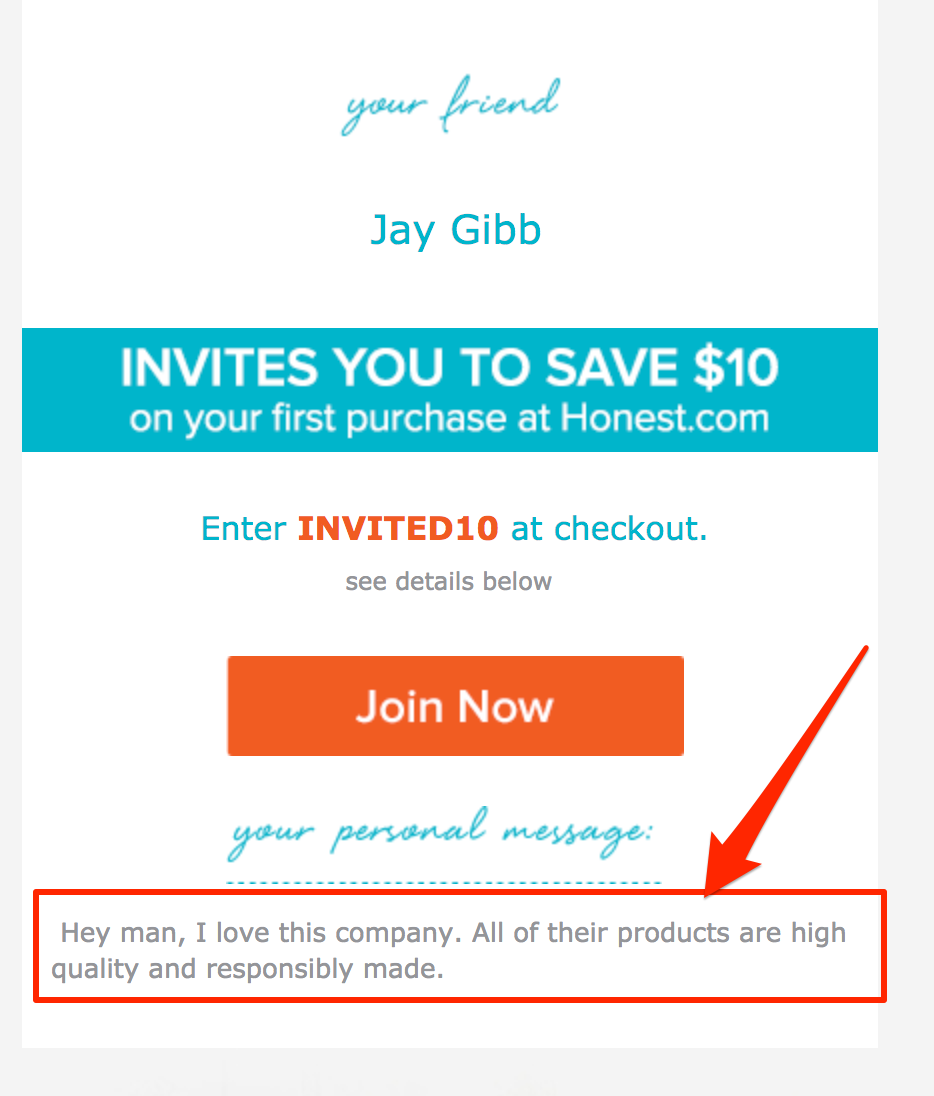
Worth to note – allowing users to add custom content to emails always carries with itself some risks.
Spammers could catch wind of this and use your platform to send links, for example.
For that reason, build at least some basic security features into this option.
For example, don’t allow to include any links, symbols or special characters.
Also, limit the length of the message to reduce the opportunity for someone sending a sales pitch with the email.
And most importantly, if you’re uncomfortable with allowing others to add something to the message, don’t implement this feature.
Closing Thoughts
Seeing a user sending a referral email on your behalf seems so exciting.
They’ve just helped spread the word about your brand.
It’s just, unless the other party actually opens (and then acts on) the email, all this is pretty much worthless.
That’s why you should continuously optimize your messages to boost open rates.
And luckily, after reading this post, you have a good idea where to begin.
Good luck.
Frequently Asked Questions
How to Create an Effective Referral Email?
To write a referral email, use a clear subject line and address the recipient by name. Introduce the person and include specific skills and achievements. Mention your relationship and why you think they’re a good fit. Close with a call to action and a polite sign-off.
How to Send a Referral Email
To send a referral email, firstly, choose the product or service you want to refer and get the referral link. Then, compose a personalized email introducing yourself, briefly describing the product, and including the referral link with any additional information. Lastly, send the email to the person you’re referring and follow up later with them if needed. Make sure you’re confident in the product or service you’re referring before sending the email.
What is a Good Referral Message?
A good referral message is one that clearly and concisely communicates why you’re recommending someone or product, and highlights the benefits of the products or relevant skills and experience of the person.
Why are Referrals so Powerful?
Referrals are powerful because they provide a personal recommendation based on positive experience with a product or personal knowledge of the candidate, which can increase trust and credibility.
How do You Write a Referral Request?
To write a referral request, start with a clear subject line, a friendly introduction, explain why you are reaching out and the type of referral you are looking for, highlight your value proposition, make the referral process easy, express gratitude and follow up, and close with a professional signature that includes your contact information.
Take the first step towards better Email Marketing
Try The Better Sharing Workbook to Get Started
(it's quick, easy and absolutely free!)

